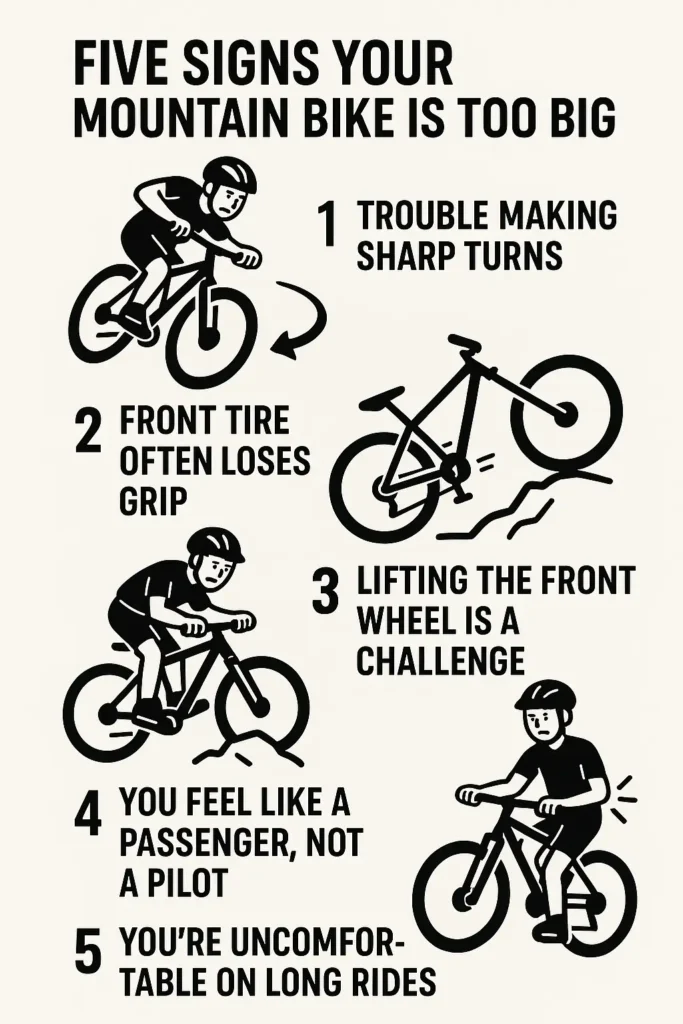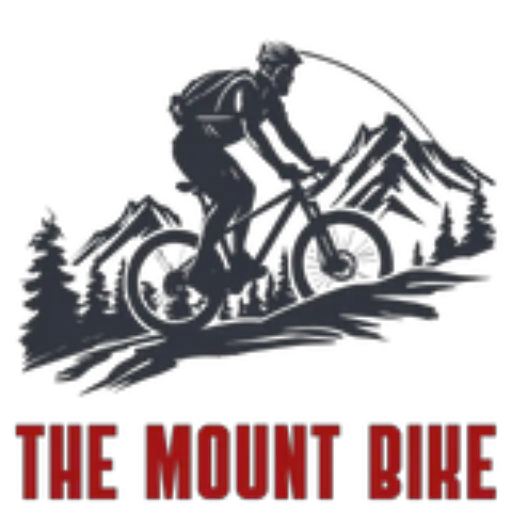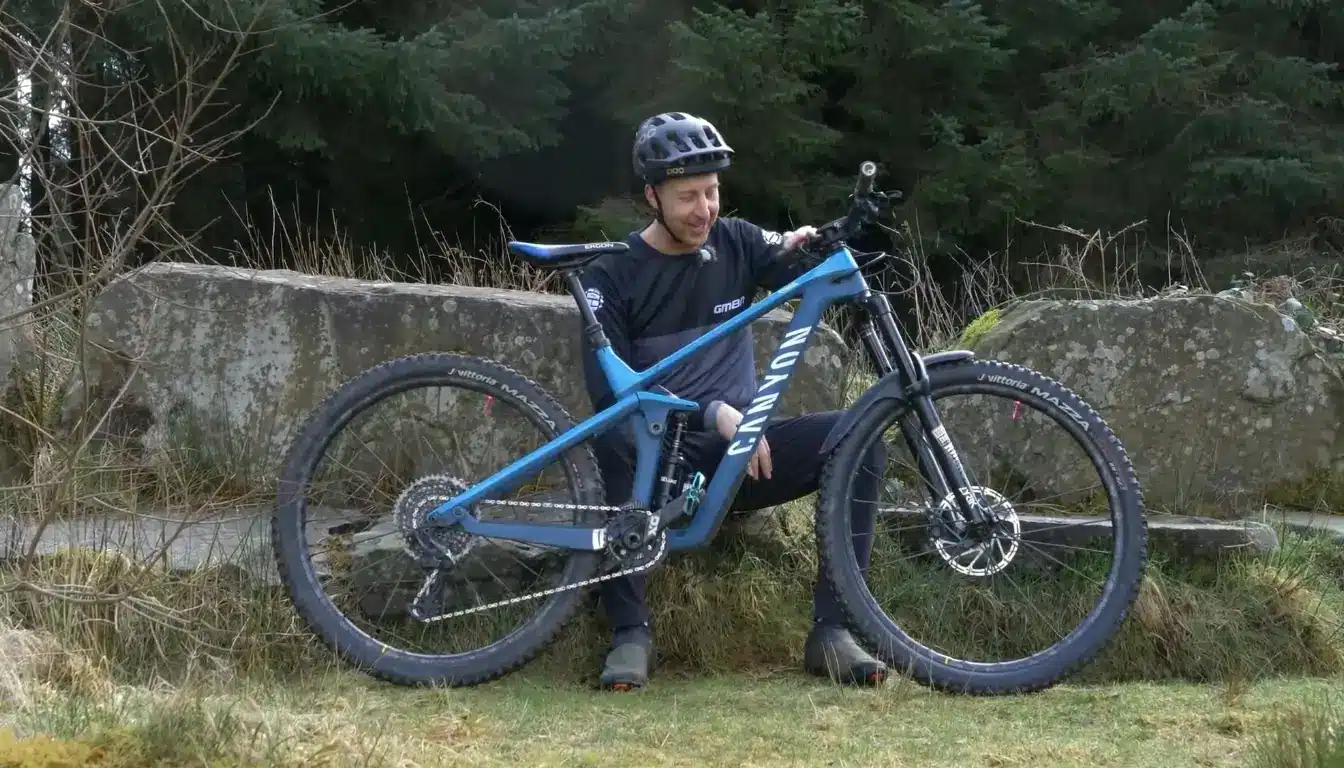There is much debate about buying a smaller mountain bike or a larger one when purchasing your first off-road bicycle. This question has been asked by many people who have never ridden mountain bikes before.
There are pros and cons to buying a big or small mountain bike, depending on what type of riding you want. You should consider a few things when deciding which size will work best for you.
This article will show you the facts that can make you thoughtful about your mountain bike size.
Importance of the Mountain Bike Size
1. How often do you ride off-road?
You may not need a large mountain bike if it’s only once or twice per year. So it would be better if you bought a medium-sized bike instead. On the other hand, if you ride off-road several times each week, you’ll probably want to go with a bigger bike.
2. What kind of terrain do you expect to encounter?
Do you expect to travel through mud, sand, rocks, etc.? If you’re going to be doing any of those types of activities, then you’ll need a larger bike. However, if you don’t think you’ll be encountering anything more than pavement, grass, dirt roads, etc., you may want to get a smaller bike.
3. How tall are you?
A taller person will require a longer seat tube length. So, if you’re 6’4″ or taller, you’ll likely need a longer seat tube length than someone who is 5’10”.
4. Do you plan on racing?
Racing requires a lot of power, so you’ll probably need a more oversized frame. However, you can be okay with a smaller frame if you don’t plan on racing.
5. Are you planning on carrying a load?
You’ll need a larger frame if you carry a heavy load. But if you don’t plan to carry a load, then you won’t need a very long seat tube.
6. How far do you travel off-road?
You’ll probably find yourself traveling farther while riding off-road than you would usually travel on the pavement. Naturally, you’ll need a larger frame to accommodate more extended trips.
7. What’s Your Body Size?
Your body weight matters too. You won’t need a huge bike if you weigh less than 150 pounds. On the other hand, if you weigh more than 200 pounds, you’ll need a larger-sized bicycle.
8. Are you planning extreme activities like jumping, climbing, or descending on your bike?
These activities require a larger frame because they increase the likelihood of crashing into obstacles.
9. How fast do you plan on riding?
The faster you ride, the shorter your seat tube needs to be. The shorter your seat tube is, the easier it will be to maintain balance.
10. What style of riding do you prefer?
There are two styles of riding: freestyle and downhill. Freestyle involves tricks and stunts. Downhill involves speed and gravity. So, for example, in freestyle, you can jump over objects, but downhill, you’d crash into them.
11. How experienced are you?
If you’ve never ridden off the road before, then you’ll need a smaller-sized bicycle. If you’ve already ridden off the road before, you’ll know how to handle a larger-sized bicycle. Having experience also helps you avoid crashes.
12. How long do you plan to use your bike?
Long-term usage means you’ll spend more time on your bike and need a perfect-sized bike. If you’re planning on using your bike for only short distances, say less than 10 miles, you’ll probably want to go with a smaller frame size. But if you plan on doing a lot of commuting, touring, or racing, you’ll likely want to consider a larger frame size.
Five Indications if your Mountain Bike is Oversized

We’ll take a look at the five most obvious warnings that your bike is too big:
1. Trouble Making Sharp Turns
Do you find it difficult to maneuver your bike through tight turns? Getting an extremely high line through tight turns can feel like a battle if your bike is too big. You can get better at riding, but if your bike is too huge, it doesn’t matter how skilled you are; you’ll always be at odds with it.
2. Low Traction in the Front Tires
Do you have trouble maintaining front-wheel traction often? The rider may experience more frequent falls and front-wheel wiggling in corners due to the increased difficulty of positioning their body over the front wheel of a long bike. Overcompensating for the lack of front wheel grip caused by a bike that is too long will force you to run very low front wheel tire pressures.
3. It’s Hard Work Raising the Front Wheel
Does it prove difficult for you to raise the front wheel above obstacles? Bikes that are excessively long often also have trouble getting the front tire high enough to drop off or “rabbit hop” obstacles. Wheelies and manuals on a heavy bike can be challenging for you as well.
4. Disappointment in Our Role as Passengers
Feel like you’re just riding along? Another serious problem with motorcycles that are too huge is that users have to grab on and let the bike plow through obstacles instead of directing it where they want to go.
5. It’s Uncomfortable
The rider’s neck, back, knees, and shoulders may experience significant pain if the bike is too large. Overly stretching to reach the handlebars can lead to pain, especially if you ride for long periods.
What should I do if the Bike frame is too big?
Trying a shorter stem may be the first step you take if you feel that your frame is too huge. Believe me when I say that even 5-10mm may make a world of difference. Although not always compatible, some bicycle frames can benefit from using lengthening or shortening headsets. If those don’t work, you’ll need to get a new frame. There seems to be an increasing number of people interested in bigger bicycle frames, so you could try advertising your smaller ones on Facebook.
Indicators that your mountain bike needs a size-up
There is a growing population of larger bikers, but some people continue to ride bikes that are too small for them because they mistakenly believe that a smaller bike is easier to operate. To what extent can you tell whether a bike is too small?
1. Aching from Being Crammed
The rider’s range of motion is restricted when the bike is too tiny, causing the rider to assume a stooped stance. As a result, it may be challenging to maneuver the bike around corners and other challenging trail characteristics.
2. Instability During Rapid Movement
A narrow wheelbase, as can occur on a mountain bike with a too-tiny frame, can make the bike feel unstable, especially at higher speeds. A lack of confidence in the bike’s stability can make even the simplest trails appear daunting.
3. It’s Uncomfortable
Many cyclists experience problems with their wrists, knees, and backs after riding bikes that are too small for them. Putting the body in an awkward position is a common cause of discomfort. A happy medium exists when one is neither too confined nor too free.
Conclusion
In conclusion, while it may seem like a trivial question, finding the perfect fit is crucial to enjoying your ride. And there’s nothing wrong with trying on different sizes until you find the right fit.
Though some may be lucky enough to have a body type that corresponds exactly to the dimensions used by manufacturers, this is only the case for some consumers. Because of this, most people fall somewhere between two different frame sizes.
To further complicate matters, frame sizing varies greatly between manufacturers, so even if you normally ride a medium in one brand, you may need to upgrade to a big in another. The only solution is to ride various bikes until you discover one that fits you well. When you’ve settled on a frame size that works for you, it’s time to take note of the essential geometry numbers like reach, stack, standover, and head angle.
When deciding on a frame size, remember that there is no “wrong” choice—only the one you find most convenient.

I am Ryan Ford, a mountain biking enthusiast who loves to explore the outdoors. I also like to go on adventures with friends and anything else that involves being outside. I love my bike because it gets me out of the house and gives me an opportunity to enjoy nature.

